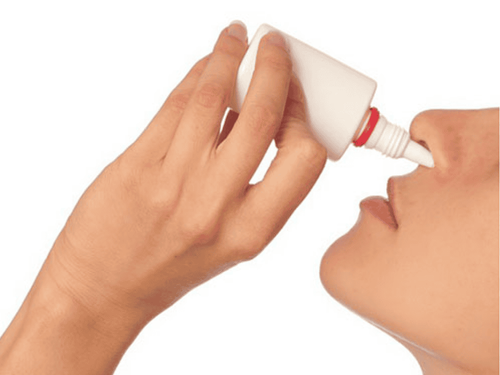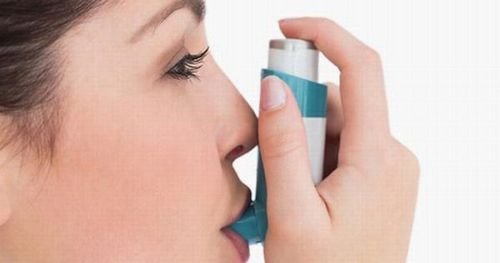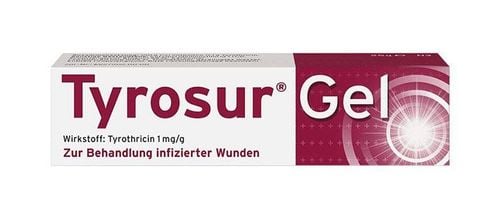This is an automatically translated article.
A combination of genetics and environmental factors can predispose children to seasonal allergies. While you can't change your child's genes, you can reduce or delay your child's responses and symptoms by minimizing exposure to irritants.1. What are seasonal allergies?
Seasonal allergies are also known as allergic rhinitis or grass pollen allergies. This is the body's response to airborne particles such as pollen or mold. This type of allergy flares up at certain times of the year, when certain plants or weeds are in bloom, or when mold releases spores into the air.Seasonal allergies are very common and affect more than 5 million children each year in the United States. A combination of genetics and interactions with environmental irritants predispose some people to seasonal allergies. They are people with immune systems that are "super alert" - always on the lookout for and reacting to foreign substances.
When a child or adult with an allergy breathes in pollen or mold spores, the body perceives this as a “dangerous invader” and responds by releasing histamine and other chemicals. Histamine inflames the nose and airways, while other chemicals contribute to the characteristic symptoms.
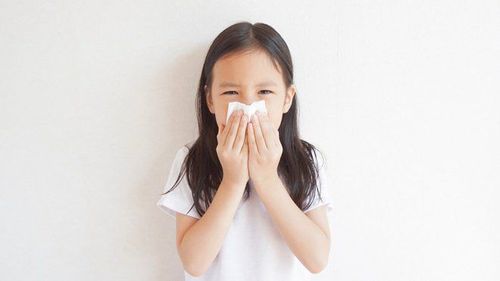
Dị ứng theo mùa còn được gọi là viêm mũi dị ứng hoặc dị ứng phấn hoa cỏ
2. Seasonal allergy symptoms
Symptoms of seasonal allergies in children can include:Stuffy, runny or itchy nose Sneezing Itchy throat Watery eyes or itchy eyes Dark circles under eyes Itchy ears No fever. These symptoms occur around the same time every year and usually go away after 4 to 10 weeks. Another sign is that children look better when they are indoors and in cars with the air conditioning on. Because air conditioners filter most of the pollen in the air.
In some cases, allergies cause coughing and wheezing in children with asthma. Although these symptoms can also be seen in children with the common cold, colds also cause fever, whereas allergies do not.
When a child has seasonal allergies will depend on:
The type of pollen or mold causing the irritation Sensitivity to seasonal allergens (some children only show symptoms when inhaled in large quantities) very high pollen) Climate and area where you live Weather. For example, hot, dry, and windy weather will spread pollen widely, increasing allergy symptoms. In contrast, people tend to be less prone to allergies on rainy, cloudy, or windy days, because pollen doesn't spread as much. Finally, a wet, cold winter and an early warm weather can trigger plants to produce more pollen than usual.
3. When to see a doctor?
People can develop seasonal allergies at almost any age, but it usually begins before age 10 and peaks in their early 20s. Seasonal allergies rarely develop in children younger than 2 years of age, because it usually takes a lot of pollen exposure for symptoms to develop. Some cases can be cured in adulthood.Accordingly, parents should take their baby to the doctor if they suspect that their child has seasonal allergies with the following symptoms:
Poor concentration Fatigue from chronic nasal congestion, sleep disturbance Sinusitis and ear infections chronic if untreated Acute asthma flare-ups Behavior problems. In addition, chronic rhinitis, nasal congestion or mouth breathing can lead to jaw deformities and misaligned teeth, affecting later aesthetics.
By examining the child and asking the parent about the symptoms that occur, the doctor can help control the allergy. Some allergy testing may be needed to determine the exact cause of your child's symptoms.
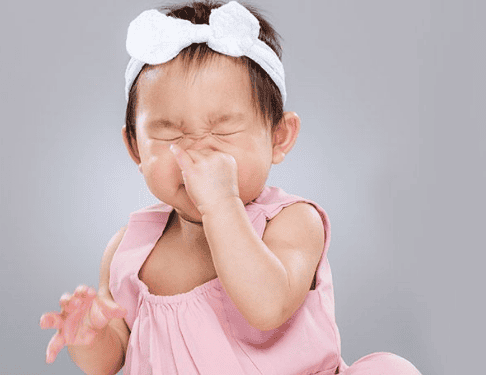
Trong trường hợp trẻ mệt mỏi vì nghẹt mũi, cản trợ giấc ngủ hãy đưa bé đi khám với bác sĩ
4. Pollen and molds that cause seasonal allergies in children
4.1. Grass pollen The most common seasonal allergy pollen comes from:Flowerless Plants Weeds grow low. Pollen from flowering plants is usually dispersed by insects, does not get into the air, so it is less likely to cause allergies.
Common seasonal allergenic plants in some regions include:
Spring: Trees such as oak, elm and birch. Summer: Grasses such as timothy, bermuda, and cat grass/orchard. Late summer to fall: Weeds like ragweed (the most common allergen), sagebrush, and nettle. Weed pollen is small, light, dry, and abundant, so it is easily dispersed through the air. About half of people with allergic rhinitis are sensitive to grass pollen. 4.2. Mold Mold is a microscopic fungus. Mold spores get into the nose and can cause seasonal allergy symptoms similar to pollen. There are two main types of mold:
Outdoor mold: Grows on soil, grass, fallen leaves and rotting logs, all wet and non-ventilated areas. Indoor mold: In attics, basements, bathrooms, refrigerators and food storage areas, trash cans, carpets and upholstery. Indoor mold can cause year-round allergic reactions in sensitive individuals, so it is not considered a "seasonal" allergy. Outdoor mold tends to appear in the summer or fall, but can still occur year-round in some climates.
5. Diagnosis and treatment of seasonal allergies in children
5.1. Diagnosis Your doctor will ask about your symptoms and do a physical exam. To determine what a child has a seasonal allergy to, the doctor may:Skin prick test / Skin prick test Spread a drop of the allergen liquid on the surface of the skin. After 15-20 minutes, the allergist will look for signs of swelling, like a small mosquito bite. More than one substance may be tested at the same time, depending on your child's age.
Secondary skin testing Sometimes a doctor will use a fine needle to inject a low concentration of an allergen deeper into the skin. Intradermal testing is done when a doctor needs to identify certain allergens but has shown negative results in a previous skin prick test.
Blood test Helps to check for antibodies specific to specific allergens. However, blood test results are not always reliable because antibodies that do not cause allergy symptoms can still be detected.
5.2. Treatment Depending on the severity of symptoms, it may be enough for some children to minimize their exposure to seasonal allergens. In addition, other treatment options include:
Saline nasal irrigation : Control of mild respiratory reactions. Antihistamines: Your doctor may recommend an over-the-counter medication that does not cause drowsiness or prescribe another appropriate allergy medication. Allergy shots: Since most children are allergic to specific substances, allergy shots that target individual allergens can be a good option if medications aren't working. Allergy shots are considered for children 5 years of age and older and need to be approved by an allergist.

Bác sĩ có thể đề nghị một loại thuốc không kê đơn không gây buồn ngủ hoặc chỉ định một loại thuốc dị ứng thích hợp khác
6. How to Minimize Pollen and Mold Exposure
While it's not possible to completely get rid of pollen when it's in season, you can minimize the amount of pollen and mold your child is exposed to by:6.1. Indoors Keep your home clean Windows, bookshelves, and air conditioner vents accumulate dust and mold that can cause allergies. Wash bed sheets weekly in hot water.
Stay away from chemical irritants Cigarette smoke, paint, bug spray, and even new carpet can irritate the lungs, worsening seasonal allergic reactions in children.
Prevent mold growth inside the home Use a dehumidifier, especially in bathrooms, basements and laundry rooms. Clean the dehumidifier regularly to prevent mold from growing inside.
Do not hang clothes If your child has seasonal allergies, drying clothes will cause allergens to accumulate on them. It is best to use a hair dryer.
Leaving pets outside If you must keep pets indoors, keep them out of the bedroom to avoid bringing in pollen and mold.
6.2. Outdoor Arrange to go outside after 10 am Pollen levels are highest between 5 - 10 am.
Stay home during pollen season When the weather is hot, dry and windy, stay indoors and close windows to prevent pollen from entering. It is best to install an air conditioner and air purifier.
Close car windows while driving and turn on the air conditioner Keep your lawn clean This can also help, because pollen is so widespread, children can still be affected miles away.
Avoid falling leaves and mix with compost If your child is sensitive to mold, don't ask her to help with cleaning and gardening. Encourage your child to stay away from wet areas, near standing water or compost piles in the garden.
Change your child's clothes after playing outside If it's not convenient to wash your child's clothes right away, put them in a laundry bag to wait for them to be washed. If possible, bathe the child immediately. If not, wash your child's hands, don't forget to bathe and wash his hair before going to bed. Don't let your child bring allergens into the bedroom.
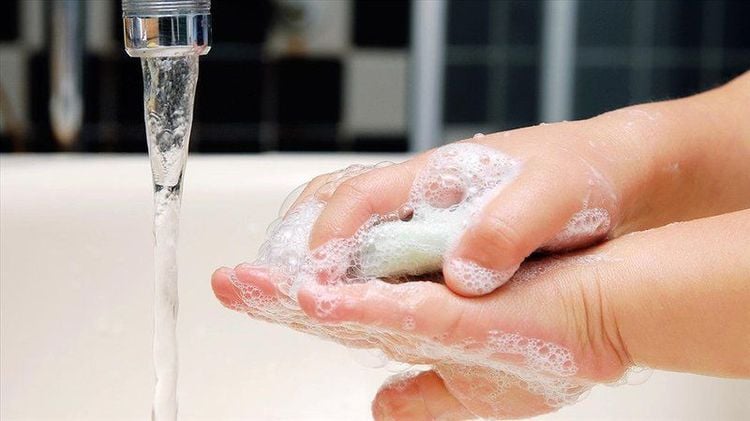
Hãy rửa tay cho trẻ sau khi đi chơi ngoài trời về
To avoid allergic children, parents should also add some supporting foods containing lysine, essential micro-minerals and vitamins such as zinc, chromium, selenium, B vitamins,... help meet nutritional needs. At the same time, support the immune system, enhance resistance, reduce the risk of upper respiratory tract infections, bronchitis, flu,...
Please dial HOTLINE for more information or register for an appointment HERE. Download MyVinmec app to make appointments faster and to manage your bookings easily.
Reference source: babycenter.com




